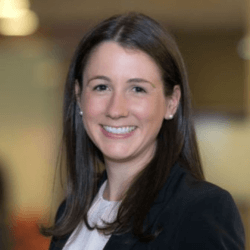February 23, 2021

The Many Flavors of Healthcare’s Not-For-Profit/For-Profit Partnerships
With valuations soaring, the market for acquisitions and consolidations has become costly and competitive. As a result, some corporate sponsors, service providers and private equity (PE) investors are looking beyond conventional M&A and joint venture transactions to seek opportunities with not-for-profit (NFP) health systems and health plans.

Although they have different governance models, tax status, accounting processes and capital formation strategies than their for-profit peers, US healthcare’s NFP payers and providers are subject to similar market pressures and the need to control overall costs, improve quality, and enhance competitiveness. An increasing number of them recognize that they cannot secure their mission or achieve their growth and financial goals without combining forces with for-profit entities.
The unconventional nature of NFP/FP partnerships may seem fraught with complexity and risk. However, such partnerships can serve as powerful vehicles for:
- Helping not-for-profits access growth capital and revenue to achieve their mission.
- Providing health systems with expertise and capabilities in ancillary service lines that reduce the overall total cost of care.
- Providing private equity investors with unique investment opportunities outside the more mainstream for-profit world.
For NFP/FP partnerships to succeed, however, the partners must resolve cultural, strategic and mission-based dichotomies with practical and meaningful approaches. Common ground is based on strong relationships, aligned governance, and enhanced profitability and cashflow.
This commentary explores the diversity of NFP/FP partnerships through three case studies: a NFP health plan and a private equity firm; two NFP health systems with two post-acute care businesses; and a large multi-practice physician group with the independent subsidiary of a NFP insurance company.
The Cain Brothers’ 2020 Healthcare Virtual Conference in October 2020 featured discussions about these case studies.
Combining Mission and Growth: The Partnership Between a NFP Health Plan and a PE Firm
The coronavirus pandemic generated both a public health crisis and an economic crisis. Public health programs like Medicaid are now more important than ever for Americans suffering economic hardship. Yet, many Medicaid health insurance plans, particularly not-for-profits, face formidable challenges in accessing the growth capital they need to fulfill their mission and expand their services and footprint.
Traditionally, most NFP plans fail to consider capital from outside investors, particularly private equity, as an option. That perspective may change.
To fulfill its charitable mission, serve its members and achieve nationwide growth, CareSource, a Medicaid not-for-profit health insurer based in Ohio, needed to access additional capital. With guidance from Cain Brothers, the second largest NFP health plan in the country turned to a leading private equity firm, Welsh Carson Anderson & Stowe (WCAS).
For WCAS, the opportunity to invest in the Medicaid Managed Care space, particularly for dual eligible populations, was attractive. It recognized that some states prefer working with NFPs in a world dominated by large commercial insurers.
Few NFPs, however, have the size and scale to compete against the national for-profit players. As CareSource CEO, Erhardt Preitauer comments, “Our Board understood how important growth is for the organization. They knew that such funding would allow us to invest in our community, mission and people, and serve more folks.”
To make the partnership work, the parties chose a creative arrangement. In June 2020, WCAS committed equity capital to a for-profit management services organization (MSO) owned by CareSource.
While an MSO structure is increasingly common in healthcare, it is rare for a NFP parent in the managed care sector to form a FP MSO for which it is not the sole owner. In the deal, WCAS is a minority interest equity investor and CareSource will be the majority owner.
Importantly, the transaction did not require CareSource to convert to for-profit status or diverge from its long-held mission orientation. Instead, the MSO structure will serve as a vehicle to help the health plan grow its government programs, expand the reach of its mission and provide enhanced services to additional members.
The arrangement included significant governance and financial challenges. There were complex factors to consider, including how CareSource should make decisions and WCAS’ investment time horizon. Preitauer acknowledges that complexity, and emphasizes the importance of a strong relationship:
“Having the perfect partner was incredibly important for us. There were many technical elements to the deal including the structure and big questions around control and how money would move around. But the biggest piece was really just understanding the business and the mission and why that’s valuable as we expand beyond the states we’re in today.”
It was equally important to make that argument inside the organization. As Preitauer recalls, “I challenged my team to think about our organization as combining the ability to execute like the for-profits with the heart, soul and mission of a nonprofit. We’re trying to combine that in a way that I think is a competitive advantage. And we needed a partner who resonated with that.”
Expanding Care Through Partnerships with Ancillary Businesses
Increasingly, not-for-profit health systems pursue joint ventures with for-profit service companies in non-acute areas.

In the urgent care space, MercyOne, a health system based in Des Moines, Iowa, (run under a joint operating agreement between two not-for-profit systems, including Trinity Health) recently formed a joint venture with Premier Health, a for-profit national urgent care provider. [1]
Similarly, Fairview Health Services, a not-for-profit integrated health system based in Minneapolis, Minnesota, recently announced its partnership with AccentCare, a national post-acute health services company. The new entity, AccentCare Fairview, will focus on home health and hospice services. [2]
Discussing the utility and potential of such partnerships, Sheri Shapiro, Chief Strategy Officer for Trinity Health, disputes the implication that “ancillary” businesses are secondary to health system operations:
“I would say for us, as we’ve worked through our strategy and vision, we find that a lot of these partnerships are core. We wouldn’t call them ancillary. We recognize that we may not have all those capabilities or expertise internally. So, we need to find like-minded and culturally aligned partners that can bring that expertise to us. Then we can go to market together to provide those services.”
Health systems are motivated by the growing need to manage quality and costs at every step of the care delivery process. As Laura Reed, COO of Fairview Health Services, notes: “If we’re going to manage total cost of care, we need a really robust continuum of care.”
For such partnerships to work, culture alignment is critical. Shapiro, despite being the chief strategy officer of her organization, believes culture “trumps strategy” when it comes to relationships. “We spent a lot of time looking for the right partner. We recognized the importance of finding an organization that was culturally aligned with us. Then we created the right incentives in the deal to make sure we truly had a partner in growth and delivering quality care.”
Because of the for-profit / not-for-profit dichotomy, governance is also critical. Reed cautions that, “It’s really important to work through transparency issues early on. It’s worth it to talk through those decisions on the front end, as part of the partnership building process.”
Shapiro echoes that perspective: “We looked for partners with similar values, mission-oriented thinking and demonstrated outcomes. It’s all about delivering value.”
Significantly, those partnerships also enable health systems to deploy their capital more strategically.
Supporting Physicians Through Group and Payer Integration
The recent merger between Brown and Toland Physicians, a leading San Francisco-based physician group, and Altais, a physician services company created in 2019 by Blue Shield of California, affirmed the potential of NFP/FP partnerships to fund and support enhanced care delivery. [3]

Founded 28 years ago, Brown and Toland operates as an independent physician association (IPA) in the Bay Area with 2,700 physicians in network serving 350,000 patients.
Through a full-service MSO structure, Brown and Toland supports its physicians in managing patient care across the continuum. The majority of Brown and Toland physicians are under contract rather than employed. They receive administrative, reimbursement and care management services to facilitate their practice.
The organization is a multi-payer, all-product company. This means physicians are able to care for patients regardless of insurance plan, across Medicare, Medicaid and all value-based programs. Brown and Toland takes financial risk with health plans and operates its own Medicare Advantage program.
Altais is a technology and services company that aims to ease the burden of physician practice and enable delivery of affordable, quality primary care. Blue Shield, one of California’s largest not-for-profit health insurers, believed that creating Altais as a for-profit company would enable greater flexibility in structuring new and more economically-aligned partnerships with physician organizations.
While Blue Shield is the founding investor, Altais works with every health insurer on an equal footing to support physicians in providing the care they see fit, regardless of health plan or program.
As Jeff Bailet, President and CEO of Altais, notes, “We knew if we were going to launch this company to support physicians, we had to do it for their full panel of patients. Physicians don’t compartmentalize their practice or segregate by payer. They treat patients.”
The goal of the merger was to provide enhanced support for Brown and Toland physicians in making care decisions for their patients; to give them tools, technologies and services that would improve their experience of care delivery and the satisfaction of patients; and to help the group expand its footprint throughout California.
Because of Brown and Toland’s tradition of physician independence, the merger could have been challenging. As Kelly Robison, CEO of Brown and Toland, notes: “We have always been physician led, physician owned and physician governed. So this is a big transition.” The Board established an advisory group of physicians to gain input on significant decisions and bolster support more widely.
Interestingly, the agreement to merge was finalized in early April 2020, at the peak of pandemic-related upheaval. The new organization met the challenge effectively. Physicians received the PPE equipment they needed, and the practice shifted rapidly toward testing and virtual care. The group’s reliance on value-based contracts also helped it weather financial instability better than most physician practices.
Robison believes that affirmed the soundness of the merger decision. “I think closing the partnership at that time helped our physicians see the level of support they were getting. We had to change on a dime.”
Success, however, will ultimately be determined by how supported physicians feel in doing their work. As Bailet says,
“Administrative burdens are creating tremendous pressure on physicians. We want to reduce or eliminate that burnout so that physicians feel that it is a delight to practice. Along the way, we’re going to be leveraging technology to fundamentally transform the way care is delivered.”
Robison concurs: “We expect in five years that physician gratification, health outcomes and patient satisfaction will be significantly higher than it is today. That’s how we’ll measure whether this partnership has succeeded.”
Conclusion: The Way of the Future
Partnerships have always existed in healthcare, but they have never been more crucial to achieving organizational mission than now. In the past, many joint ventures were launched with great fanfare, but often became the unwanted stepchildren of their parent organizations, as attention and resources got diverted elsewhere.
The emergence of joint ventures, mergers and funding arrangements between not-for-profit and for-profit entities signals a new strategic imperative for partnerships. An increasing number of not-for-profit health systems and plans recognize that they cannot secure their mission or achieve their growth goals without combining forces with for-profit entities.
Such arrangements are never straightforward transactions. They present complex challenges which call for creative solutions. Inherent differences in mindset make cultural alignment a primary consideration. The partnership must support and accelerate the strategic vision of the organization while preserving the culture and mission that is fundamental to its reason for being.
Fortunately, US healthcare now has this new option on the menu, as industry transformation continues.
Sources
- https://www.mercyone.org/about-us/news-events/mercyone-and-premier-health-announce-partnership
- https://www.cainbrothers.com/transactions/fairview-home-care-hospice-partnership-with-accentcare-inc/
- https://www.bloomberg.com/news/articles/2020-06-16/blue-shield-of-california-tries-to-fix-dysfunctional-health-system
Co-author
 Stacy Guffanti is a Director in the Firm’s Corporate M&A practice. Ms. Guffanti joined Cain Brothers in 2017 and brings 8 years of investment banking experience advising both public and private companies in a variety of merger and acquisition, capital raising, and strategic advisory transactions. Ms. Guffanti’s recent transactions include the sale of TARGET PharmaSolutions to Norwest Venture Partners.
Stacy Guffanti is a Director in the Firm’s Corporate M&A practice. Ms. Guffanti joined Cain Brothers in 2017 and brings 8 years of investment banking experience advising both public and private companies in a variety of merger and acquisition, capital raising, and strategic advisory transactions. Ms. Guffanti’s recent transactions include the sale of TARGET PharmaSolutions to Norwest Venture Partners.
Prior to joining Cain Brothers, Ms. Guffanti was a Vice President in Goldman Sachs’ Global Consumer Retail and Healthcare Investment Banking Group. She also worked in healthcare equity research at Citigroup, where she covered the Managed Care sector. Ms. Guffanti received her BA in Mathematical Economics from Colgate University and her MBA from the Tuck School of Business at Dartmouth. She is also a CFA charterholder.





